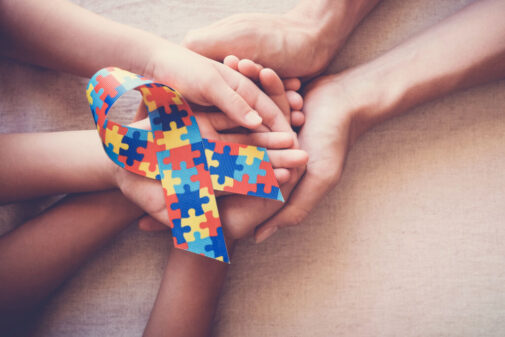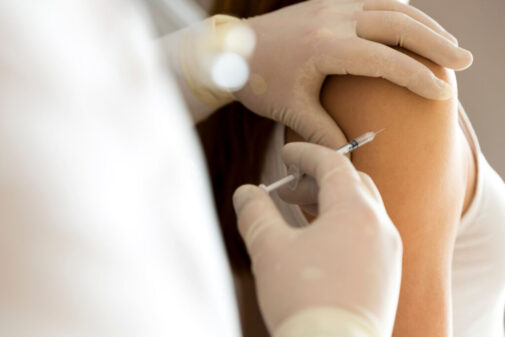Autism diagnoses in the U.S. are on the rise

Data from the Centers for Disease Control and Prevention revealed an increased prevalence of autism spectrum disorder during 2020. The data shows that one in 36 eight-year-olds were diagnosed with autism in 2020, as compared to one in 44 just two years prior. These measured diagnoses have increased since the surveillance year of 2000.
From 2009-2017, parents report approximately one in six children, or 16.67 percent of children, have been diagnosed with developmental differences, including autism spectrum disorder, speech and language delays, ADHD, blindness and cerebral palsy. For reference, the prevalence of asthma in children under 18 years old is 5.8%.
Additional data on autism rates in 4-year-olds shows that the developmental disorder is more common in Black, Hispanic, Asian and Pacific Islander children than white children.
“These estimates are higher than in the past, and the overall prevalence is now lower among white children than in other racial and ethnic groups,” says Dr. Sarah Bauer, a developmental and behavioral pediatrician, site medical director of a Pediatric Developmental Center at Advocate Health Care, and a leader of the ECHO Autism program at Advocate Children’s Hospital. “On top of this, co-occurring intellectual disability is more likely to occur in Black children than in white children. It is important to understand why this is occurring so interventions may be targeted and individualized to children as early as possible.”
While Dr. Bauer notes the importance of monitoring data regarding overall diagnosis and prevalence of autism and co-occurring conditions in all racial and ethnic groups, she thinks it will be especially important to monitor the pandemic’s effect on autism prevalence rates.
“Over the course of the pandemic, we saw well-child care, including developmental screenings and ongoing surveillance, decrease as fewer families attended regular pediatrician visits,” she says.
Dr. Bauer explains that even though the data describes more children being identified with autism spectrum disorder, others are not identified until they are older, often due to a lack of routine screening and surveillance.
“The researchers call for better infrastructure to address diagnostic, therapeutic, educational and family support in more equitable and sustainable ways,” says Dr. Bauer. “We need to consider what protective factors are in place as well as other social determinants of health that impact access to early and appropriate support services.”
Early identification matters.
“That doesn’t happen without ensuring developmental screening and surveillance,” explains Dr. Bauer. “Additionally, early referrals to birth to 3-year-old services and school district programs need to occur and be properly staffed and funded. With the current pediatric population and number of developmental specialists, the country will not have enough specialists to diagnose and treat children with developmental differences. Therefore, we have to participate and be open to new pathways of providing care. ECHO autism programs are one way to address the ongoing access issue for all kids and families.”
To learn more about ECHO Autism programs at Advocate Children’s Hospital, contact ACH-ECHOAutism@aah.org.
Are you trying to find a pediatrician? Look here if you live in Illinois. Look here if you live in Wisconsin.
Related Posts
Comments
One Comment
About the Author
Holly Brenza, health enews contributor, is a public affairs coordinator on the content team at Advocate Health Care and Aurora Health Care. She is a graduate of the University of Illinois at Chicago. In her free time, Holly enjoys reading, watching the White Sox and Blackhawks, playing with her dog, Bear and running her cats' Instagram account, @strangefurthings.


















With the rate of autism-diagnoses greatly increasing, maybe schoolteachers should receive mandatory autism [spectrum disorder] training.
There could also be an inclusion in standard high school curriculum of child-development science that would also teach students about the often-debilitating condition (without being overly complicated).
[From my observations, low-functioning autism is relatively readily recognized/funded/treated, as opposed to higher-functioning ASD cases, which are commonly left to fend for themselves.]
If nothing else, the curriculum would offer students an idea/clue as to whether they themselves are emotionally/mentally compatible with the immense responsibility and strains of regular, non-ASD-child parenthood.
It would explain to students how, among other aspects of the condition, people with ASD (including those with higher functioning autism) are often deemed willfully ‘difficult’ and socially incongruent, when in fact such behavior is really not a choice.
And how “camouflaging” or “masking,” terms used to describe ASD people pretending to naturally fit into a socially ‘normal’ environment, causes their already high anxiety and depression levels to further increase. Of course, this exacerbation is reflected in the disproportionately high rate of suicide among ASD people.
Regarding my autism-spectrum disorder, I’m sometimes told, “But you’re so smart!” To this I immediately agitatedly reply: “But for every ‘gift’ I have, there are a corresponding three or four deficits.” It’s crippling, and on multiple levels!
A physically and mentally sound future should be EVERY child’s fundamental right, especially considering the very troubled world into which they never asked to enter.